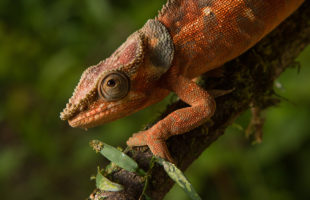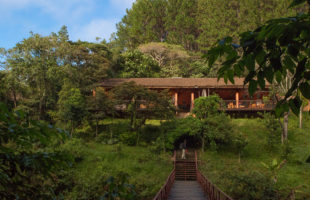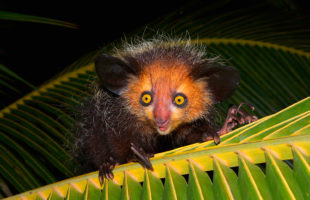#1 Lemurs are only found wild in Madagascar The island of Madagascar is the only country in the entire world where lemurs occur naturally. Only two species of lemurs, the brown lemur, and the Mongoz lemur, were trafficked to the Comoros by humans and have successfully settled there. Many species of lemurs are not even found in zoos today, but …
LesenSchlagwort-Archiv: Indri
Protected area Maromizaha
Maromizaha: Actually this protected area consists of two forest areas, Maromizaha and Vohidrazana. The latter means as much as “mountain of the ancestors”. In contrast, the Malagasy words maro and mizaha can have two different meanings. It may be “the place where many people do research” but also “the forest which is exploited by many people”. Location: Maromizaha is located …
LesenProtected area Anjozorobe-Angavo
Anjozorobe-Angavo: The name Annjozorobe probably comes from the Madagascan “zozoro”, a certain kind of reed of the area. Legend has it that they were used as hiding places by the “menalamba”, who fought under the French colonial power for the liberation of Madagascar. Location: The protected area of Anjozorobe-Angavo is located 90 km northeast of the capital Antananarivo in the …
LesenDie singenden Lemuren: Indris
Ihre Gesänge gehören zu den eindruckvollsten, die die Tierwelt zu bieten hat: Man kann die Stimmen der Indris (Indri indri) kilometerweit durch den Wald schallen hören, und sie tragen eine eigentümliche Traurigkeit mit sich. Angeführt und begonnen wird der Gesang stets vom Elternpaar einer Familie, das damit sein Revier absteckt, aber auch mit anderen Familien kommuniziert und vor Bedrohungen wie …
LesenZahamena national park
Zahamena: Zahamena means „red trees“, which hints at a tree species scientifically called Diatum unifoliatum. It occurs only in Zahamena and has a typically reddish-orange colored bark. Location: Zahamena national park is located in the northeastern highlands of Madagascar, in the region Alaotra-Mangoro. This area is famous for Madagascar’s largest lake, Alaotra, which is about 25 km away from the …
LesenWhy the largest lemur in the world is called Babakoto
Once upon a time in a small village in Madagascar, a Bezanozano man (a tribe living in the east of the country) prepared a small basket. He asked his little son Koto to come with him and together they wandered deep into the jungle to find honey. After a few hours they found a bee hive on a high rosewood …
LesenLemurs, the spirits of the forest
Lemurs are probably Madagascar’s most famous mammals – not for nothing because they originally exist only there and nowhere else in the world. They belong to the strepsirrhine primates and are divided into about 100 different species. The word lemures comes from Latin and refers to the spirits of the dead of ancient Rome, who have little resemblance to the …
Lesen MADAMAGAZINE Your Magazine about Madagascar
MADAMAGAZINE Your Magazine about Madagascar







